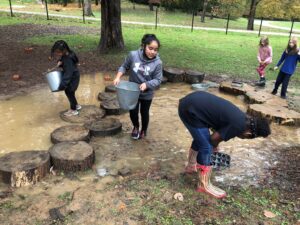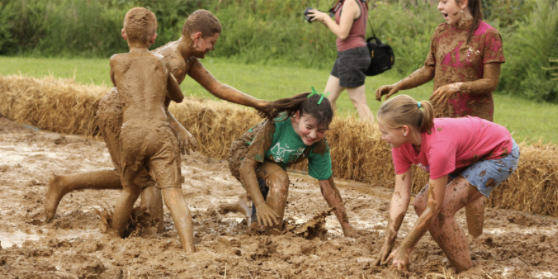
Many of us recognize nature as a wonderland of sensory experiences. Often, we may think of using our five senses in nature, listening to or feeling the coldness of a babbling brook for example. Did you know there are actually more than five senses that are recognized by our sensory system? The senses of body awareness are often overlooked. However, these senses significantly impact the activities in which we choose to participate, how we structure our routines, and our wellness overall. Proprioception is one of these body awareness senses. It can be defined as the sensation of pressure or force on the body. The receptors that sense proprioceptive input are located in the skin to interpret deep pressure and around the joints to interpret impact or movement. Every person has a need for proprioceptive input, but how much we need depends on the individual. Some actions that provide healthy proprioceptive input in our daily lives may be physical exercise or stretching, hugging, and cuddling up under a heavy blanket.
Proprioception plays a large role in how children choose to play. Children who are said to play “rough” may be individuals that just need more proprioceptive input than others. In a play environment, including the Playcosystem at Bernheim, activities that provide significant proprioceptive input could include lifting and carrying heavy objects, jumping or crashing from elevated areas, banging together loose parts, and hanging from or crawling on the hands. All of these activities provide some level of pressure or impact feedback to the sensory system. An individual who does not need a lot of proprioceptive input may avoid these activities and, instead, opt for more stationary or gentle play. So let’s think, are you or your child someone who wants a lot or a little bit of proprioceptive input? What activities do you or your child use to get your fill?

Author – Bri Marr. Bri is a doctoral capstone student from the Spalding University Auerbach School of Occupational Therapy working with the Children at Play Network from May to August, 2023. As part of her capstone experience she has created a series of blog posts on outdoor play through the lens of occupational therapy.